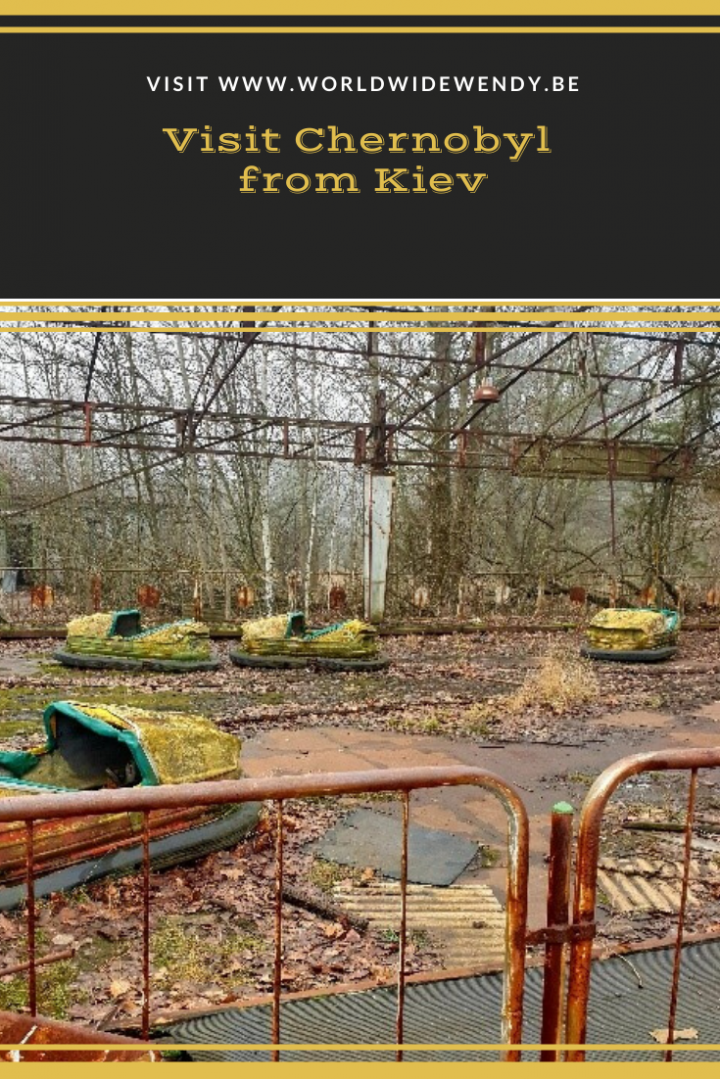Jan Maes chose a very special destination for his latest citytrip. He went to visit Chernobyl from Kiev. Kiev does not immediately occur to you when you think about your next trip. The main purpose of the trip was to visit Chernobyl, a destination that crossed my mind several times but I had doubt about the safety. Jan's blogpost answered many questions.
Citytrip Kiev Every year in January, my girlfriend and I do a citytrip. This year we decided to travel to Kiev (Ukraine) and to visit Chernobyl from Kiev.
We flew from Dusseldorf-Weeze to Kiev in three hours. Once there, we took the train (very cheap: one ticket was not even a euro) and it only took four minutes by metro to our apartment in the "Summit Apart Hotel". It was immediately noticeable that public transport in Kiev is modern, well-organised, and very cheap.
And Kiev itself seems to be almost as well-organised below ground as it is above! It appears that a large part of life takes place underground, with actual supermarkets, shopping malls, etc. that run underneath the major roads and squares in the city.
When you take the metro, every metre you descend below ground seems to take you further and further back to the former Soviet Union. The very long authentic escalators transport you many metres down, in Arsenalna even to the deepest metro station in the world at 105.5 metres below ground. It often takes a few minutes before you are all the way down. Finding your destination by metro is very easy, since there are only three lines (red, green and blue).
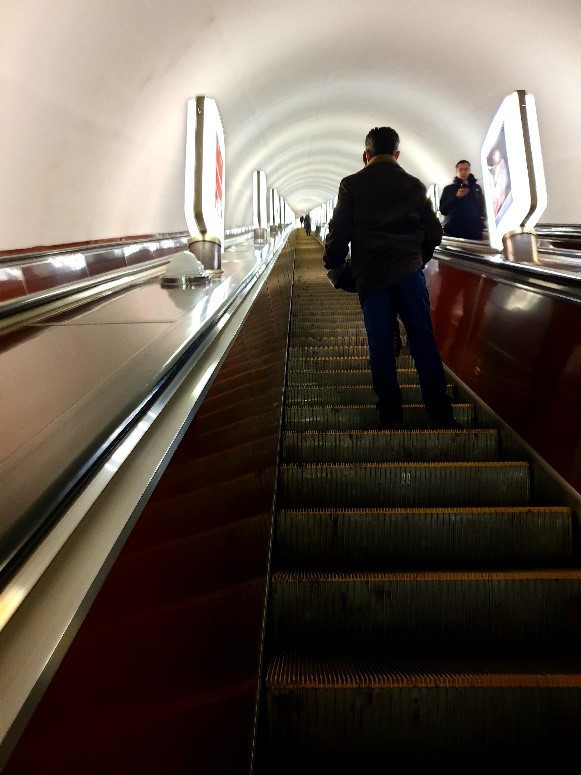
Tsjernobyl in short
Chernobyl was an ordinary town in a wooded area in Ukraine. On April 26, 1986, the whole world got to know this insignificant town because of the nuclear disaster caused by the explosion of reactor 4 at the Chernobyl nuclear power plant.
Despite the fact that therer is still radiation, the area an now be visited safely. It's perfectly possible to visit Chernobyl from Kiev. There is also the possibility to spend the night in the closed zone.
Visit Tsjernobyl from Kiev
On the first day of our trip we ate something in town after we arrived and then went to bed early as our day trip to Chernobyl was planned for the next day.
On Friday morning we were expected at hotel Dnipro at 7.30 am. There we were welcomed by our guide Alex from "Gamma Travel", the travel organisation we used to book Chernobyl tour from Kiev.
You cannot visit Chernobyl unplanned, nor can you just book it a few days in advance or when you are already in Kiev.
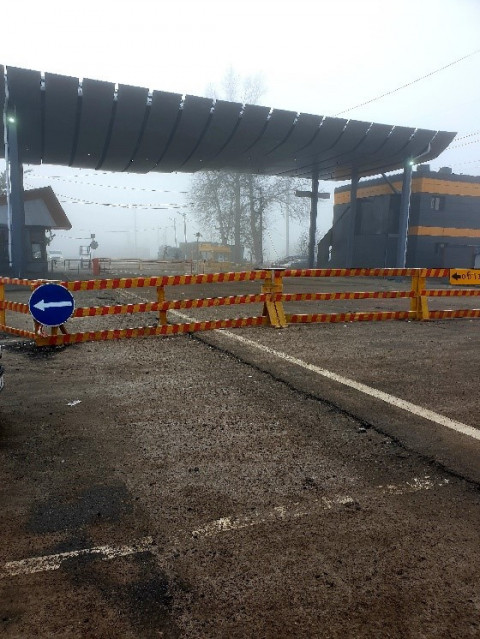
Checkpoint 1
In principle, you are only allowed to enter the 30-km zone (the "Chernobyl exclusion zone") with an official guide. It is therefore advisable to book visit Chernobyl via the internet a few weeks prior to your departure.
The travel company requested our passports and proof of our health insurance well in advance, as they need to arrange all necessary official government documentation in time.
It is a 90-minute drive from Kiev-city to the checkpoint where you can enter the zone. Along the way we noticed that the many houses and villages along the main roads are often very small and dilapidated. On the other hand, we also saw large, characteristic Soviet housing blocks emerge from the ground, especially just outside the centre of Kiev.
When we arrived at the checkpoint for the exclusion zone, our guide took care of the communication and the check-in at security. There we also spent 10 euros on Geiger counter, which we would be able use all day to measure the radiation level (on the ground, on a tree, on an object, etc.). We also saw some other tourist minivans looking to enter the zone for a Chernobyl tour.
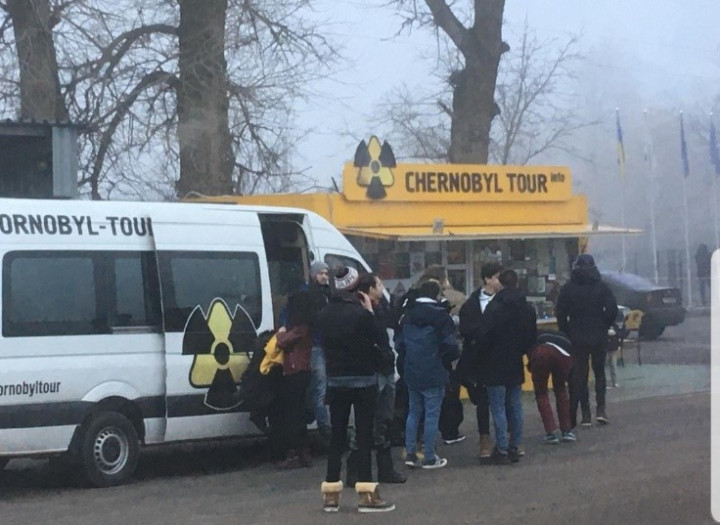
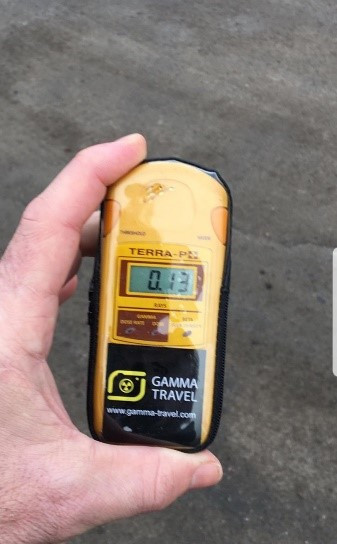
Best time to visit Chernobyl from Kiev
A thick fog had descended on Kiev and the area around Chernobyl, and it did not budge for the entire day. It made the whole experience even more mystical and also more impressive. On top of that, our tour was almost a private matter as our Chernobyl tour group included only six other tourists. And of course also our eccentric guide from Kiev and his driver who took us from one stop to the other. Our guide told us later in the day that we had chosen a good time for our visit, as the area is much busier in the summer: full of tourists and guided groups of up to 50 people at times. It is much quieter in the area in the winter because tourists avoid the cold. Having said that, it remained around 0 degrees all day, this was not as cold as we expected when we booked our visit to Chernobyl from Kiev. In addition to the cold and fog, it was the impressive silence that fed our experience: no people, no traffic...
A visit to Chernobyl is hard to describe. It is certainly a once-in-a-lifetime experience. You have to see it and feel it to know it.
Different zones in Chernobyl
30 km-zone
No "unauthorised persons" may enter the "30 km zone". A number of concrete main roads run through the area, and the small villages along the roads lie sometimes hidden among the overgrown bushes and trees.
Exclusion zone
Our first stops are just inside the exclusion zone, when we visit a few villages where time stood still, literally. It is almost unbelievable that all buildings, attributes, homes and even cars have just stayed behind like that: with everything still in it. We saw a house where the pans were still on the stove, the 1984 calendar still on the wall, and the sheets still on the beds. A school where the children’s beds and dolls reminded us of the small communities of people who at the time had to leave everything behind and get on that bus, no exceptions, without thinking... to never return (although they did not know this at the time).
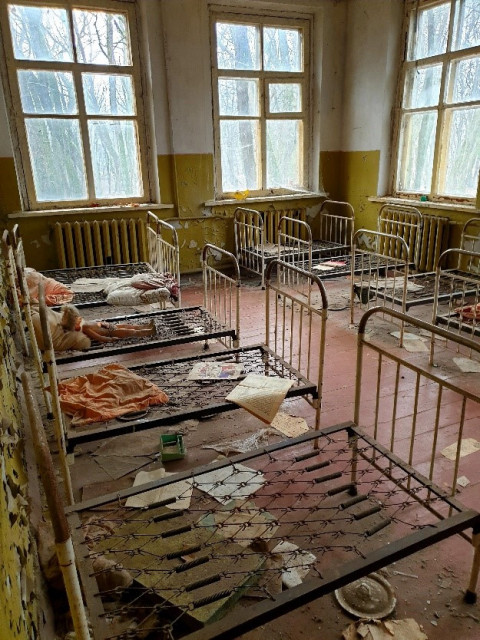
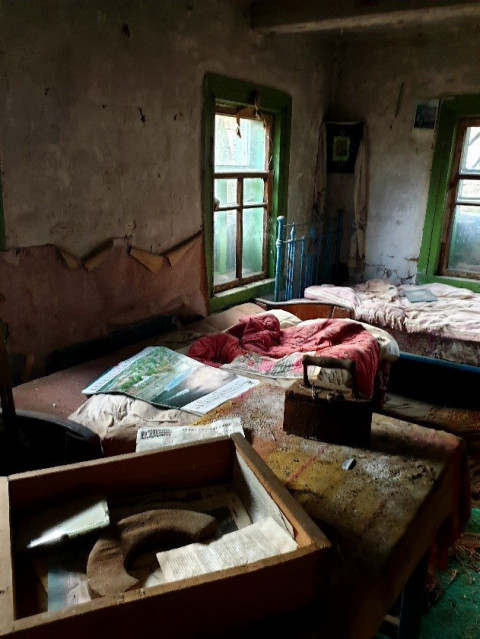
10 km-zone
The journey continued to the area within the 10km zone. We eventually passed the reactor, with the cover placed over it a few years ago.
After that, our driver stopped in Pripyat, the largest city that was evacuated at the time. You could clearly feel the Soviet past in Pripyat: literally all facilities were available. We visited buildings that served as a hotel, hospital, cinema, swimming pool, etc.
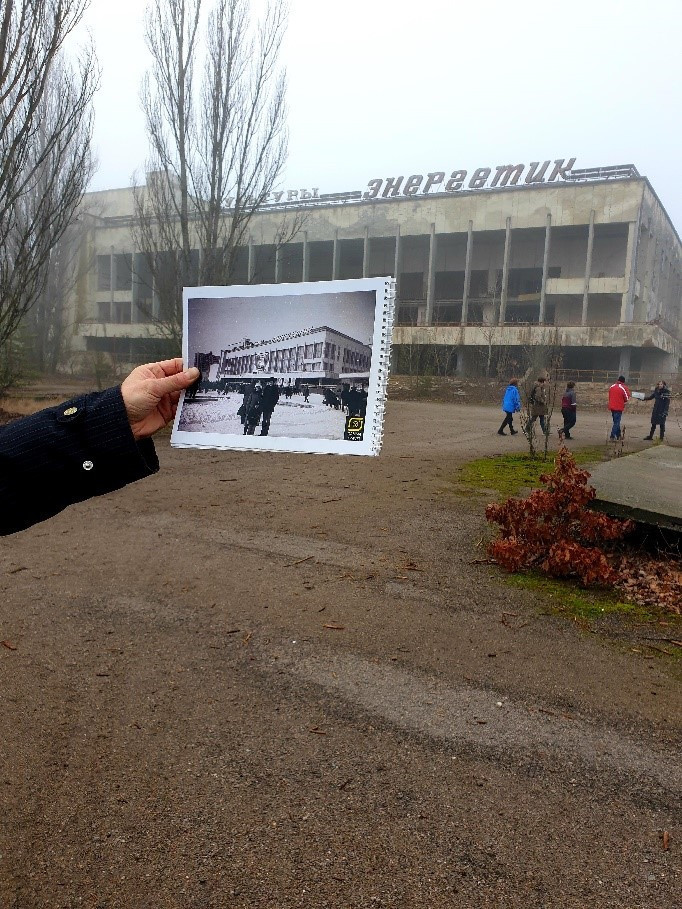
The hospital still houses the furniture and beds in which the first firefighters were cared for at the time: those who were first on site after the explosion. The equipment they used and the clothes they wore are downstairs in the basement of the hospital. Both the clothing and the furniture still emit a huge amount of radiation, even so many years later.
The guide recommended that we mainly walk on the concrete, not on the moss, and to not pick up or touch things on the ground. Although the radiation has decreased sharply after all these years, it is certainly still present, in some places more than in others.
We also visited the most iconic and famous place in Pripyat: the amusement park (including the bumper cars and the Ferris wheel), which were set up especially for the 1 May festivities at the time, but which were ultimately never used.
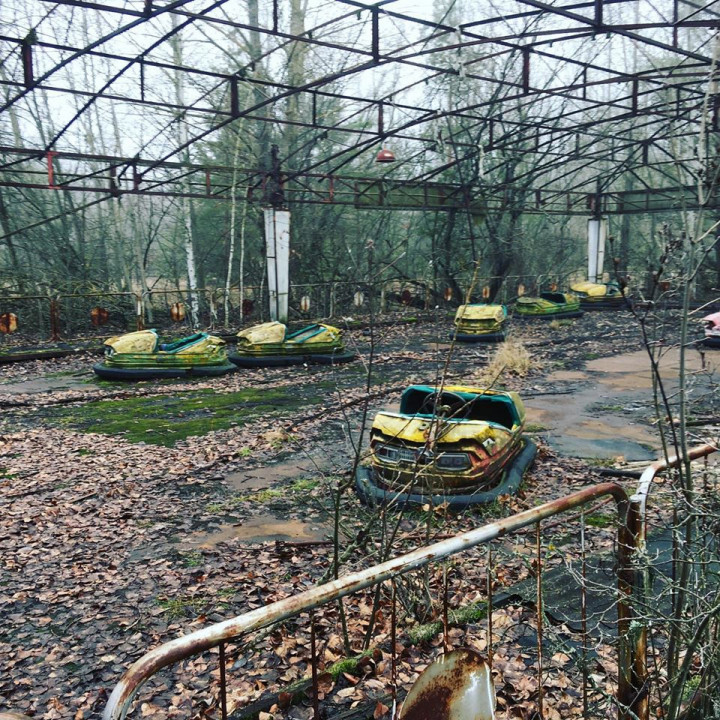
You feel, see and smell the past everywhere: old gymnastics shoes in the gymnasium, a broken piano on the podium in the conservatory, now-rusty soft-drink vending machines at the cafe... Visiting Pripyat is a must-do during a Chernobyl tour, but I’m fairly certain that every travel company will include this in the tour anyway.
It was 1.30 pm, a good bit after noon when we were able to sit down at the former canteen of the nuclear power plant (near Pripyat) for a warm lunch with soup and vegetables, etc. The guide clearly stated beforehand that all the food is prepared outside the restricted area and then brought in.
Militairy grounds
During the afternoon we visited the old military grounds, with a lot of abandoned buildings and sheds, up to the “duga”: an extensive metal radar system that was built to intercept the launch of hostile rockets during the Cold War. The structure towers high above the trees, and if you stand underneath it, it seems infinitely high (110 m) and long (600 m).
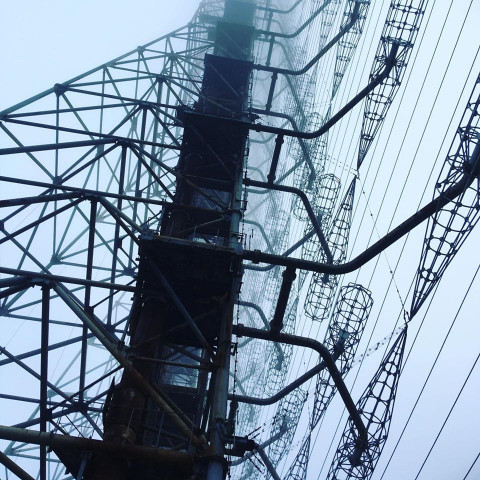
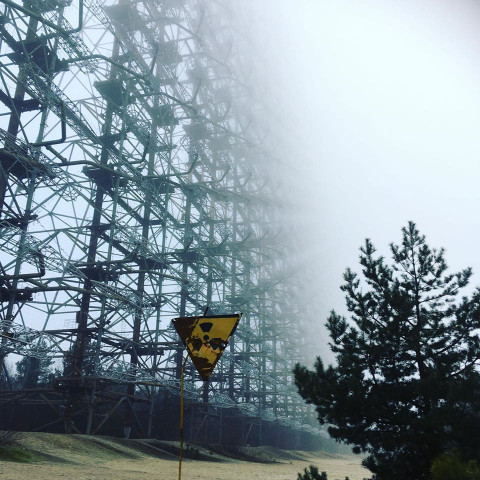
Our last stop was in the Chernobyl municipality itself. Again, dozens of vacant houses, reclaimed by nature. A real ghost town. We stopped in the centre and the guide showed us the last statue of Lenin to be found in the Ukraine. He also said that there are 31 people who live in Chernobyl at the moment, mostly old people, and he brings them groceries when he passes by with tourists. Some tourists ask him whether they can meet a resident and most of them are happy to welcome you.
In spite of the proximity of the old nuclear reactor and the danger of radiation, people still effectively live in Chernobyl, and there is a shop and even a post office. The administration office for the nuclear area is also located in a building in the centre.
After a long, and still rather cold, but particularly impressive day, we returned to Kiev in the minivan. During the drive, videos were shown of the nuclear disaster and how it happened, and also of life in Pripyat before the disaster in 1986. Pripyat was a bustling city, with many options for living, working and recreation. Despite that "bustling", throughout the day our guide mainly emphasised the darker sides of the Soviet past. He spoke about Russian domination, communist ideas and state interference, poverty, and especially censorship aiming to inform the population as little as possible.
Precautions after your Chernobyl tour
Finally, on the way back our guide gave his version of what to do after a day in the area: you don't have to burn your clothes or throw them away, put them in the washing machine at most.
“Don’t be a radiophobic, the radiation for one day is very limited, it’s the same amount as taking a plane for four hours.”
And if we really did want to do something: take a shower as cold as possible when you get home, so that your pores do not open. Wash yourself, and then heat up the water. In the meantime, put your clothes in the washing machine. That is all there is to it, according to our guide.
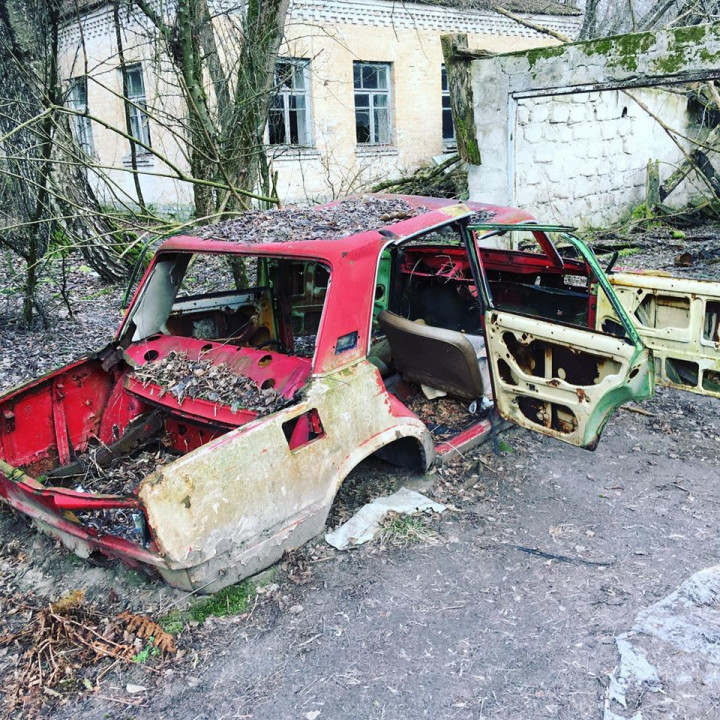
Citytrip Kiev
We spent the last two days of our trip in Kiev itself.
Like most cities in Eastern Europe, Kiev has a lot to offer. Stately, grey (or sometimes very bright) buildings from a Soviet past can be found alongside cosy coffee bars and hip food outlets. The city is a mix of Western influences and remaining authentic elements. Hip young people who deliver food on their bikes make their way alongside older residents, dressed in fur coats and warm hats, often with a typical, somewhat surly appearance.
Ukraine is not part of the EU, but we noticed that mainly in the absence of the "euro". Money was a bit of a calculation: divide the amount in Ukrainian Hryvnia by 27 to get the amount in euros (January 2020). You can pay everywhere by card, so we did not even get any cash during our entire trip.
We walked along the famous Andriyivskyy Descent with its artists, saw many Orthodox churches with beautiful colours, and we also visited the old Monastery of the Caves where you can do a (free) short tour of the old underground corridors, and where you literally bump into the mummies (embalmed monks).
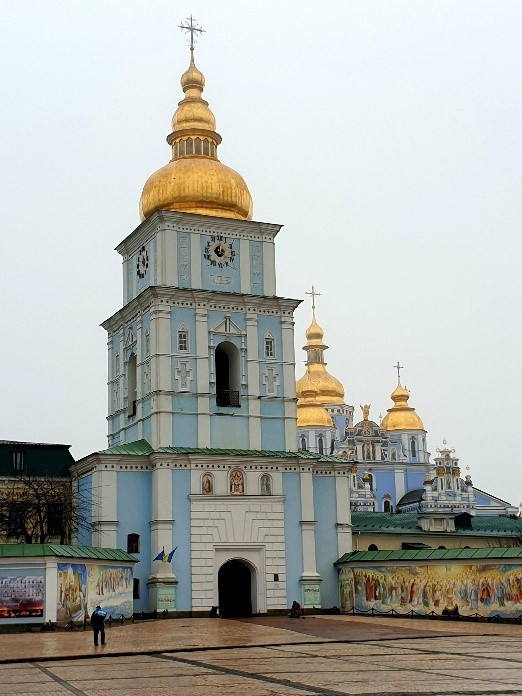
Food in Kiev
If you want to eat in Kiev, we definitely recommend to seek out an authentic (sometimes touristy) restaurant where they offer real Ukrainian cuisine (with a lot of meat, "dumplings", soups such as borscht, etc.). Ukranian cuisine is about the same as Russian cuisine.
Conclusion: a city trip to Kiev is more than worth it. We think it would be nicer to visit in the summer, since it is a very green city with lots of trees. A combination with a visit to Chernobyl from Kiev is definitely a must. But for that visit we think that the winter period is probably better.
Anyway: let the city, the unique atmosphere, the often still dominating Soviet feeling wash over you.
We certainly came back home radiant from our four-day stay!
Like it? Pin it!
